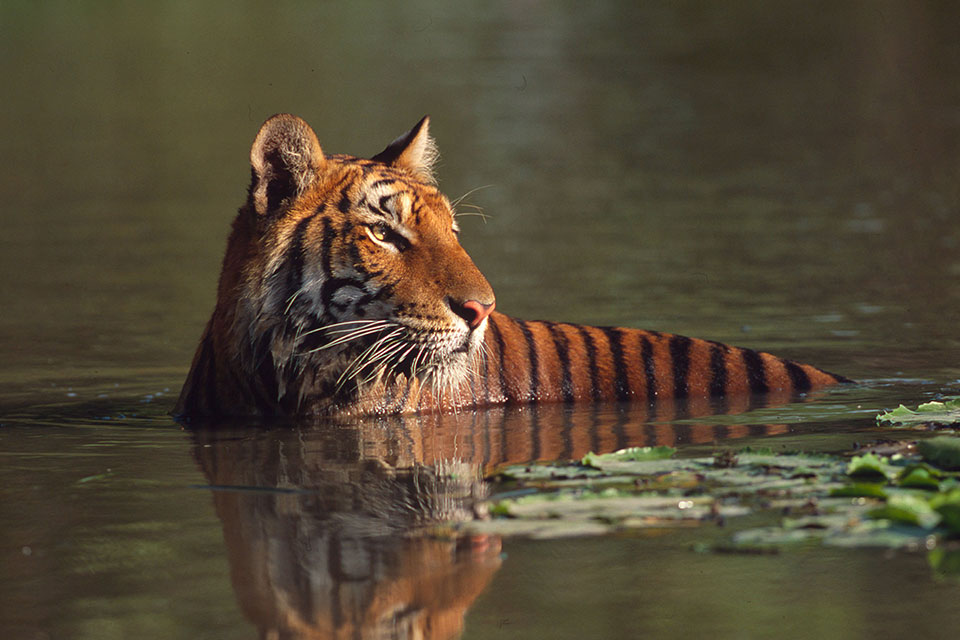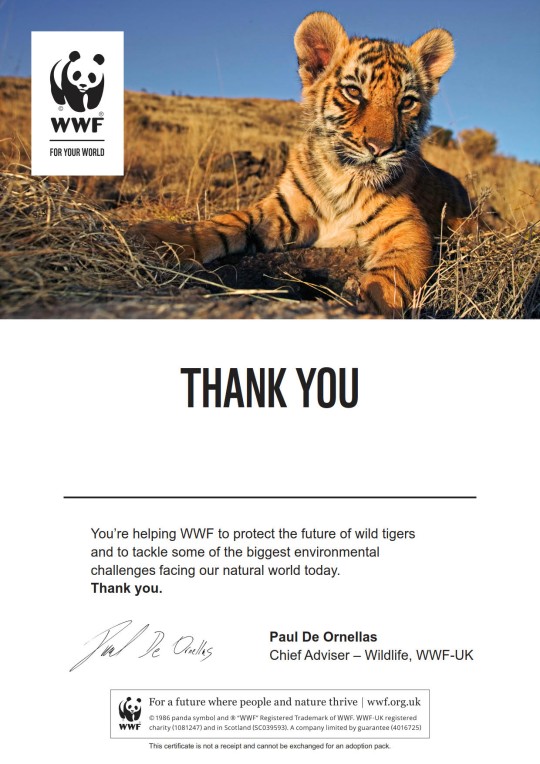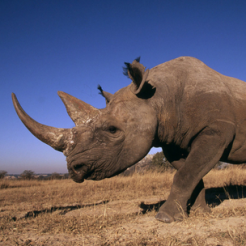Your adoption will help fund tiger protection projects such as movement monitoring and reducing poaching, and will also help fund other vital work around the world. When you choose an animal adoption, you are supporting both your chosen animals as well as wider work to help bring our world back to life.
Your Adoption Really Helps
Animal adoptions like yours give a huge boost to our work. They not only help fund projects to work with local communities to monitor tiger movements, reduce poaching and help people to realise benefits from living in close proximity to wild tigers - but they also support our other vital work around the world.
Adopt a tiger and receive
Tigers can be found in isolated forests and grasslands throughout Asia. Their habitat is wide ranging – from evergreen and monsoon forests, to mixed coniferous-deciduous woodlands, and mangrove swamps. There are estimated to be around 4,500 tigers in the wild.

Threats that tigers face

POACHING AND ILLEGAL WILDLIFE TRADE
The parts of at least 110 tigers were seized in Asia annually between 2000-2015. This equates to over 2 tigers per week seized in illegal wildlife trade. Mainly killed for luxury products, using their skins and bones.
HABITAT LOSS
Gradually, tigers are being forced into small, scattered islands of remaining habitat. Tigers range has reduced by 95% since historical times.
HUMAN TIGER CONFLICT
As tiger range declines, they come closer and closer to people. This can lead to conflict as people protect their families and livestock from tigers.

LOSS OF PREY
Reduction in tiger prey, due to hunting and habitat deterioration, has a direct effect on wild tiger populations.
How We Can Help
We’re determined to help secure a viable future for wild tigers. Our goal is by 2034, wild tiger populations and distribution are increasing or stable in priority landscapes across their existing and historic range.
Your adoption and support will help us:
- secure well-managed protected areas
- restore fragmented areas of habitat (wildlife corridors) so tiger populations can grow
- strengthen anti-poaching patrols in and around protected areas
- conduct camera trap surveys to be able to track population trends and guide conservation action
- fund our other essential work around the world

Unlike many cats, tigers like water and they are excellent swimmers.
Last minute gift?

Free delivery
Welcome packs will be sent within 2-3 working days - but allow up to 5 days for it to arrive.
Want to protect other big cats too? Check out our adopt a big cat page to find out more.
Tiger adoption FAQs
Yes, you can adopt a tiger with WWF. Donations from tiger adoptions go both directly to support tigers, as well as to fund our wider work to protect nature and our planet. Adoptions are symbolic for donating and supporting our conservation work with different species. By adopting a tiger, you will be supporting a whole group of tigers, rather than one individual.
You can adopt a tiger with WWF from just £3 a month if you pay via Direct Debit, or with a minimum one-off payment of £36. To adopt a tiger with WWF, select your donation amount on the widget, click 'Adopt Now' and then complete your donation via our secure online checkout.
You can adopt a tiger with WWF from just £3 a month via Direct Debit, or from just £36 via a one-off payment. Your money could go further if you pay by Direct Debit as this supports our long-term planning and helps keep our administration costs down.
When you adopt a tiger with WWF, 50% of your donation will fund programs of work that directly support tigers while the remaining 50% will fund other projects that need it most. After adopting a tiger you'll receive a welcome pack including an optional toy and note from the WWF team welcoming you on board. We'll keep you updated on how you're supporting our vital work by sending you three adoption updates a year.
Tiger adoptions help us; conduct camera trap surveys to track population trends and guide conservation action; strengthen anti-poaching patrols in tiger habitat; restore wildlife corridors to encourage tiger population growth.
Tigers are endangered and only around 4,000 remain in the wild. Sadly wild tiger numbers have dropped by around 95% since the beginning of the 20th century. However, for the first time in conservation history, their numbers are on the increase.















